In the U.S. government, checks and balances refers to the separation of power in the government, which is ensured through the establishment of three different branches:
- The legislative branch is made up of the House of representatives and the Senate, forming the Congress. They make all laws, control budgets and have the authority to declare war.
- The executive branch consists of the President, the vice president and the cabinet. This branch is responsible for enforcing the laws of the land and the army.
- The judicial branch consists of the U.S. Supreme Court. They are special judges who interpret laws according to the Constitution. They are the highest court in the country.


The two houses in the American Congress are important. They need to both agree in order to pass laws. Until they agree the project of law goes from one house to the other until it is validated.
Both senators and representatives are elected directly by citizens.
